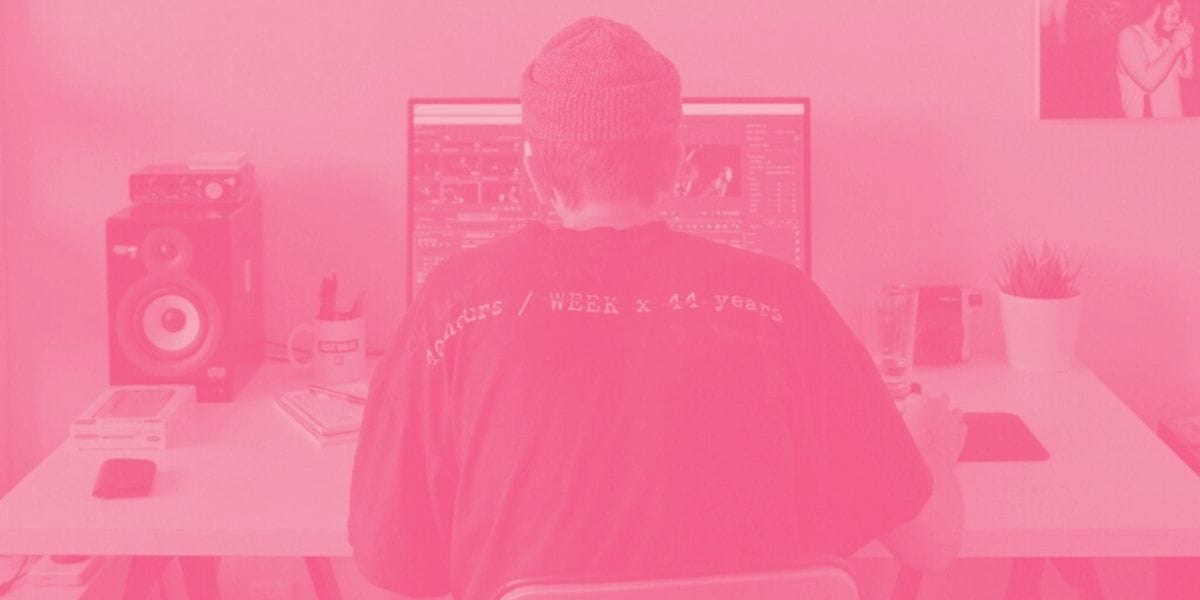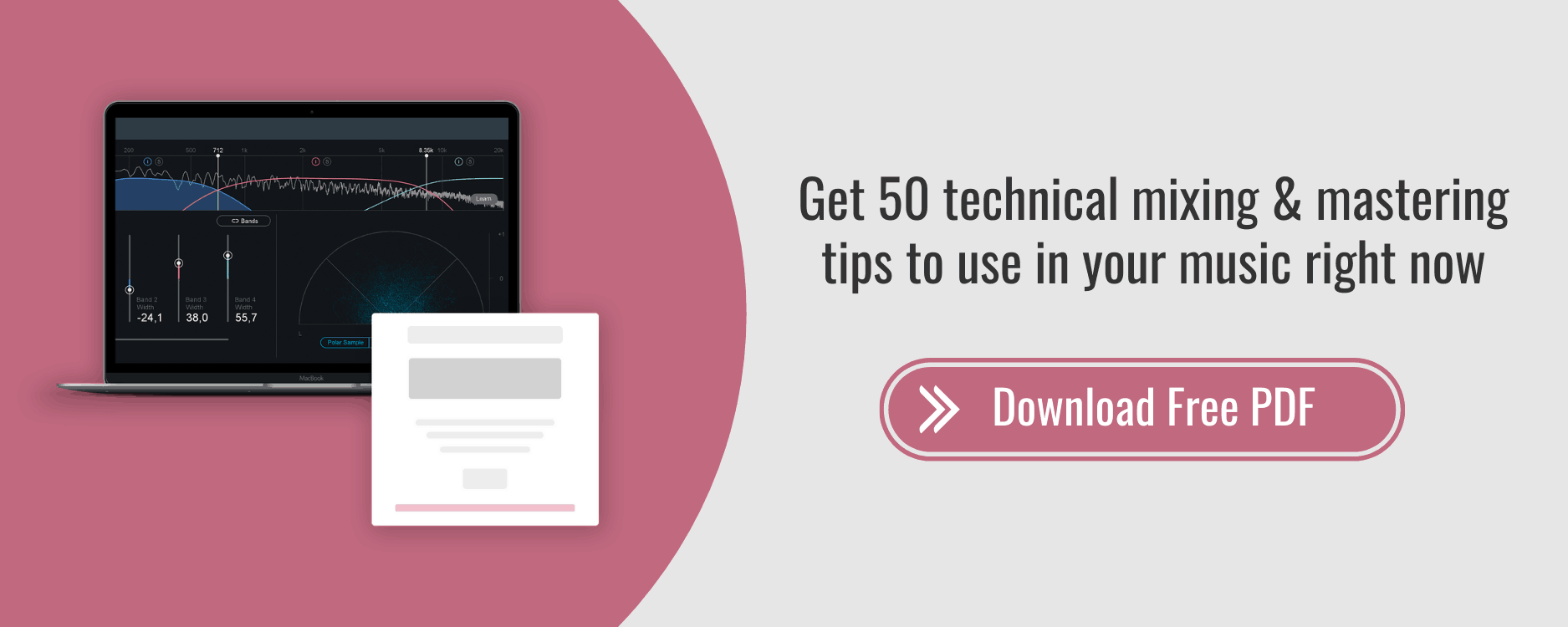10 Strategies to Heal Lower Back Pain for Music Producers
"87% of young people have back pain. The other 13% have no computer."
— Anonymous
I love being a music producer, but I developed a lot of lower back pain.
And as a result, I've grown to hate sitting for long periods of time...
Over the years, I've seen aggressive lower back pain, but, I've also subsequently seen my lower back pain completely dissipate due to the strategies outlined in this article. Because of this, I feel like I am in a unique position to at least offer my story of what works, what doesn't work and most importantly, how you can potentially avoid a similar scenario all together.
Why Does Sitting Suck?
According to Harvard Medical School, over 47 studies have shown time and time again, that sitting is correlated with heart disease, obesity, premature death, diabetes and even cancer. Right off the bat, standing will help you burn 30% more calories in a resting state - a number that while relatively small, can really add up over time.
Turns out, sitting is quite the paradox - after a long day, we want nothing more than to put our feet up on the couch and relax, but in reality, any position we hold for a long period of time will eventually lead to pain, because our bodies are not primed to exist in a stationary state.
How Does Sitting Lead to Lower Back Pain?
Without getting too deep into the science, sitting is torture for our nerves. Imagine fastening an 11 pound weight to the top of your spine (that's your skull by the way), and then imagine you maintain perfect posture through out the day - it's almost impossible. Your head will slouch forward, your back will curve, and the tension this creates will increase through out the day, weeks, months and years.
Our spine is asking, if not begging us to stand. An upright position puts the discs in your lower back in proper alignment and minimizes the pressure they endure. Sitting, on the other hand, forces the vertebrae to crunch down onto each other and bear a lot more force, increasing the risk of chronic lower back pain.
Quick Disclaimer: I am NOT a Doctor
This should go without saying, but I am NOT a doctor and am not qualified to provide medical help or diagnose any existing medical conditions. This entire article is based on my personal experience of overcoming lower-back pain that at one point, I thought was chronic. The good news? It's not. Keep reading to learn why.
1. Invest in a standing desk
This is hands down, the most important change I made to fight off lower back pain. I purchased an Uplift Desk by Human Solution at the start of 2017. It's worth mentioning that this isn't a permanent standing desk, but a motorized electronic desk that can be moved up or down at the press of a button.
This is really important because standing all day, just like sitting all day, can also lead to various health issues. The beauty lies within finding a balance between sitting and standing.
On any given day, Monday through Friday, I'll spend at least 6-8 hours at my computer. The balance that works for me (where I don't feel tired from standing, but don't feel tightness or lower back pain from sitting, is to stand for about 4-6 hours. And then I sit for no more than 2 hours per day.
Something that helps get me standing: I take all phone calls, Skype calls, team meetings, and teaching sessions for the Hyperbits Masterclass etc. while standing. Automatically, this gets me out of my chair and helps me feel like a level 5 businessman.
2. Take frequent breaks
Your metabolism slows down after about 45 minutes of sitting. The longer you sit the more nerve pressure you'll experience. Over time, sitting can also weaken your glutes, which will lead you to compensate by over-using your lower back or hip-flexors.
Before I had a standing desk, I had some marathon sitting sessions - meeting deadlines, producing for 12+ hours straight, starting an online business... I was super passionate about music and I never even thought about the ramifications of sitting for long periods of time. I always tried to take breaks, but never made them a priority. Now, I set an alarm and make sure I'm never in one position for more than 30-45 minutes.
For some more direct music production knowledge, check out 20 Lessons In Music Production I Wish I Knew When I Started.
3. Make sure your chair doesn't suck
I know that sounds like silly advice, but make sure your chair offers lumbar support, has at least some ergonomic features to it, and don't be afraid to sell it on Craigslist or return it to the manufacturer if you start experiencing lower back pain.
I bought a relatively cheap chair from Staples (under $80) and I know for a fact that chair directly lead to my lower back pain. That chair sucked. Big time.
But I kept trying to stick with it because I'm stubborn and was trying to be frugal. Several months of paying for physical therapy set me straight...
Do you need the most expensive chair out there? Of course not. In fact, I believe that it almost doesn't matter what chair you have assuming you have invested in a standing desk, and are spending 70-80% of your day on your feet.
4. Get a softer mattress
There is an insanely huge amount of conflicting advice about lower back pain and soft vs. firm mattresses. It's almost as bad as the classic DAW debate! I had almost given up on the research, until I heard Kelly Starrett (a trainer for CrossFit games medalists, Olympic Medalists, Tour de France cyclists and elite military personnel) on the Tim Ferris podcast talk about his mattress checklist:
5. Try a new sleeping posture
On that note, I must say, for years, I slept on my stomach with my head turned out to one side. I never thought much of it - until I realized that every time I went to physical therapy or acupuncture and was asked to lie on my stomach, my lower back would be either in direct pain or ridiculously tight after.
I figured, there is no way that sleeping for 8 hours a night on my stomach was helping my lower back - so I did some research and found that the best position for lower back pain was to sleep on my side with a pillow inbetween my legs.
Within a few days, my lower back was not nearly as tight in the mornings, and within a few months, the pain seemed to go away all together (in conjunction with everything else on this list).

6. Lift weights and do some circuit training
Again, it is hard to pin point exactly what helped my lower back pain because I was trying several strategies at once, but my lower back pain really started to subside after about 2 months of joining F45 — a high intensity interval training gym, similar to Crossfit but without any of the olympic lifting.
I had been doing plenty of fitness on my own before I started F45. I had been doing circuit training 2-3x per week, going for 4-5 mile runs 2-3x per week, and even doing yoga 2x per week, and still, after the first F45 session I could barely walk for a week. We're talking burning 600-700 calories in a 45 minute workout.
Never the less, by week 2, I was able to go twice, and by week 3 I was able to attend four times, and by week 4 I was going six days-per-week.
Somewhere around there, I couldn't believe how much better my lower back was feeling. It's worth noting that I took it super easy on direct lower back exercises like deadlifts, kettle bell swings, and really, anything I deemed might be too much pressure on my lower back. I started with body weight only and slowly introduced resistance bands, followed by light weights and eventually followed by some heavier weights.
For some tips on how you can overhaul your creative mindset, check out 103 Music Production Tips: Mixing, Mastering, Sound Design, Composition & Mindset.
7. Avoid over-stretching
Interestingly enough, it wasn't until I stopped going to Yoga that my lower-back pain started to resolve. Perhaps I was over stretching, maybe my form needed more correction, maybe I'm just that tight - whatever the case - I love Yoga and plan to reintroduce it back into my workout routine once I've built some more strength in my glutes and in my lower back.
I'm always trying to do some light stretching, but like anything in life - moderation might be key if you are already in a flexion state through out most of the day. This article helped clear up some concerns I had about over-stretching.
8. Use a lacrosse ball
Ever use a lacrosse ball to dig into knots and pressure points? Welcome to your new favorite torture device.
Again, without getting too much into the science, my physical therapist told me I needed to loosen up the glutes from all those years of sitting (both as a music producer and as an ex-pharmaceutical conference marketer that was miserable in corporate America).
What followed was pure, utter torture for the first few weeks. Here's what I did: sitting down, crossing one leg over the other knee, I sat directly on a lacrosse ball, one glute at a time, for as long as I could stand it, as many times per day as I could stand it.
After day 1, my glutes hurt simply from walking around (insert that's what she said joke here?). But over several weeks, I noticed less and less pain when using the lacrosse ball, and thankfully, less and less lower-back pain.
Interestingly enough now, if I feel like I need to loosen up my lower-back, I don't stretch my glutes, I simply sit on a lacrosse ball and like clock-work, my body starts to loosen up.
9. Foam rolling
While using a lacrosse ball to become a supple leopard is significantly more painful than foam rolling, using a foam roller is no walk in the park either.
The benefit of using a foam roller is that you can hit significantly more muscle groups - from directly rolling your hamstrings, calves or IT band, to rolling your lower, mid and upper back - foam rollers allow the flexibility and malleability to hit whatever part of the body you want to address.
Personally, I try to foam roll every day. And while foam rolling definitely played a role in helping my lower back, I was foam rolling for over a year before adding some of these other strategies, and it never completely alleviated the pain.
10. Eat an anti-inflammatory diet
Look, if you have chronic pain, your diet may not heal you, but at the same time, if you think it doesn't play a role in your healing, you are highly under-valuing the significance of what you choose to put in your body.
This is a super, super loaded topic, and all I am going to say is this:
Do some research. Don't always trust traditional western medicine, but don't blindly turn away from it. Between all the preservatives, processed foods, growth hormones, antibiotics, GMOs and more, it can't be coincidence that the human population has never been more sick.
Left un-checked, eating a diet that causes inflammation will not help your lower back. So again, do your own research, but consider eating an anti-inflammatory diet to combat any inflammation that is occurring in your body.
Here is a list of books I've read and documentaries on Netflix that lead me to my own conclusions. Sure, these are jaded towards a particular agenda, specifically, a plant-based agenda - but never the less, there is some amazingly informative information in every single one of these documentaries and books:
Netflix Documentaries:
Books:
Summary
More so than anything, I've learned that everyone is having a different experience. What works for me, might not work for you. I can only hope that my experiences might shed some light in an otherwise ridiculously convoluted space - healing the human body.
That said, get out there and try something. Conduct your own experiments. Some doctors have given me great advice. Some have given me terrible advice. It's up to us to take in all this information with a grain of salt, ask the right questions and eventually, draw our own conclusions. Figure out what works for you and ignore the rest.




